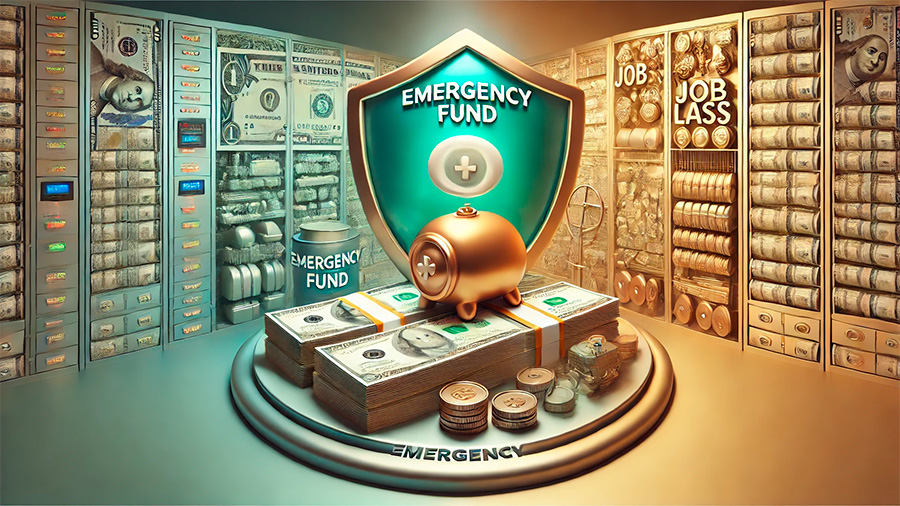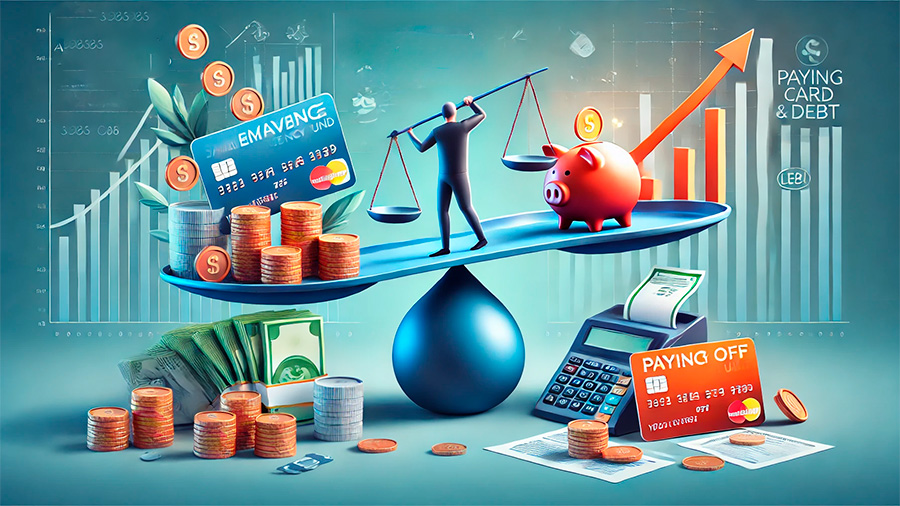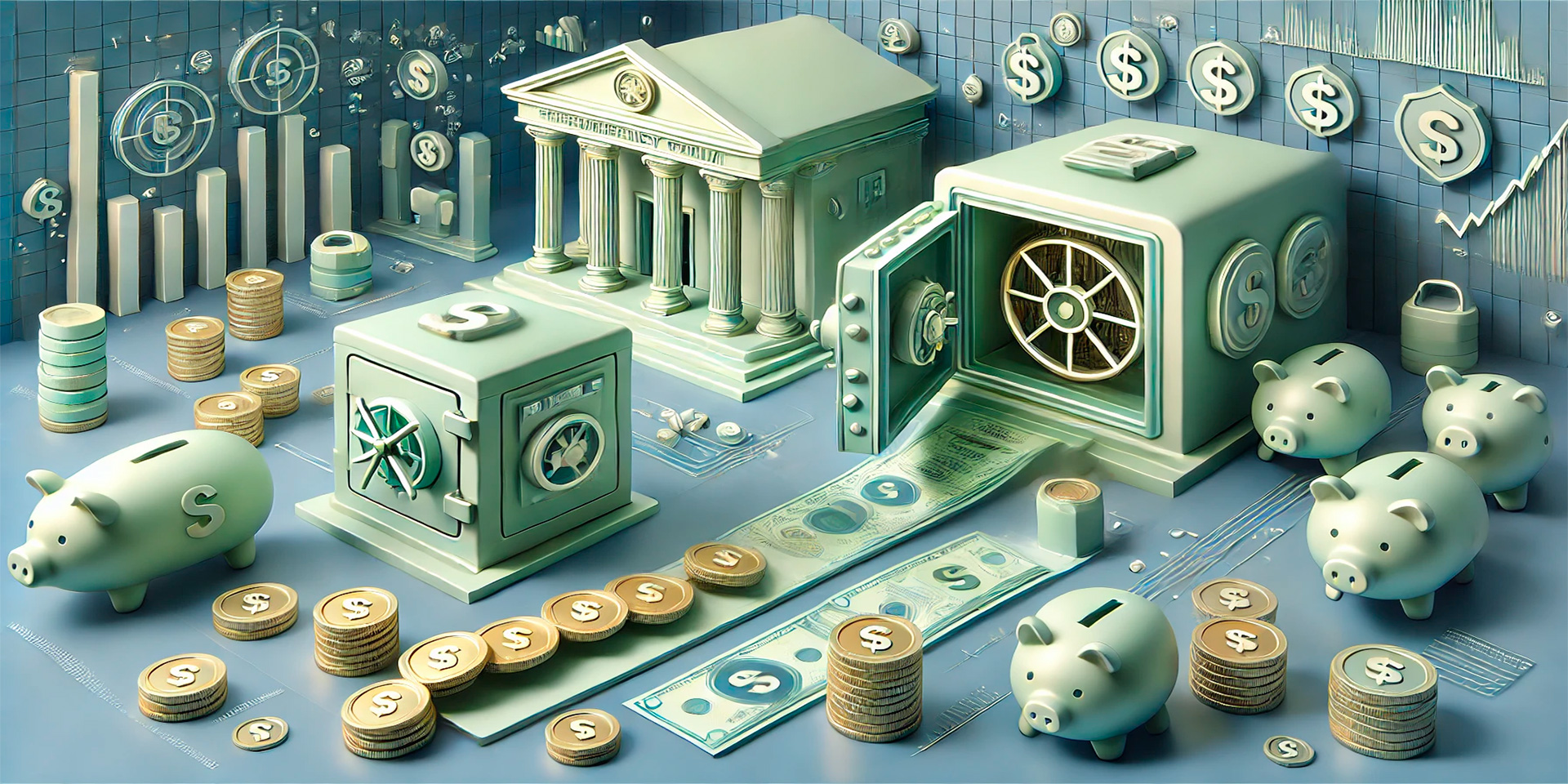Safeguarding your emergency fund is essential to ensure quick access when unexpected expenses arise. Opting for secure, liquid, and interest-bearing accounts can help you protect and grow your savings. Options like high-yield savings accounts, money market accounts, and certificates of deposit (CDs) offer safety, with FDIC or NCUA insurance providing peace of mind. Specialized accounts like SoFi Checking and Savings also combine accessibility with competitive interest rates, making them ideal for emergency funds. Keeping your emergency fund in these secure options ensures it’s readily available when you need it most, without compromising on growth.
Where Are The Safest Places To Keep Your Emergency Fund Money?
To keep your emergency fund safe and accessible, you should consider these options:
- High-Yield Savings Account: This account offers higher interest rates than regular savings accounts, helping your money grow faster. Many online and traditional banks provide these accounts with no fees or balance requirements.
- Money Market Account: Similar to savings accounts but with higher interest rates, these accounts also offer check-writing capabilities and debit card access. Plus, they are FDIC-insured.
- Certificate of Deposit (CD): CDs lock your money for a set period in return for a higher interest rate. They are safe but less liquid since you can’t access the funds without a penalty before the term ends.
- SoFi Checking and Savings: This combination account separates your emergency fund from your main checking account and earns a competitive APY, especially if you use direct deposit.
Remember to keep your emergency fund separate from your regular accounts to avoid spending it on non-emergencies.
To sum up, you can protect and grow your emergency fund by using high-yield savings accounts, money market accounts, CDs, or specialized accounts like SoFi Checking and Savings, ensuring safety and easy access when needed.

How Does Having An Emergency Fund Provide Financial Security?
Having an emergency fund provides substantial financial security by serving as a financial buffer during unexpected expenses like medical emergencies, car repairs, or job loss. It prevents you from falling into debt or using high-interest credit cards, shielding you from a debt cycle. This fund ensures that you can handle unexpected costs without compromising your long-term goals, such as buying a home, saving for education, or securing retirement.
You gain crucial protection against job loss with an emergency fund. It covers your essential expenses during unemployment, giving you time to find a new job without rushing into any low-quality positions. By having funds set aside, you minimize the need for high-interest loans or credit card debt during emergencies, maintaining overall financial stability. It also helps protect savings and investments meant for long-term goals, eliminating the need to dip into them for immediate, unplanned expenses.
Knowing you have a financial cushion reduces your stress, allowing you to face life’s surprises with confidence. Regularly contributing to an emergency fund teaches you to prioritize saving and budgeting, enhancing your overall financial management skills.
To wrap things up, having an emergency fund ensures you’re protected against job loss, prevents debt, safeguards long-term goals, offers peace of mind, and promotes financial discipline.
What Are Some Common Financial Emergencies That An Emergency Fund Can Cover?
An emergency fund covers many common financial emergencies that can pop up unexpectedly. Here are some examples:
- Job Loss: If you lose your job, your emergency fund helps you manage rent, bills, and groceries while you find new work.
- Medical or Dental Emergencies: Unexpected health issues can be costly, even with insurance. Your emergency fund helps cover these expenses.
- Car Repairs: Whether it’s a breakdown or an accident, having funds set aside ensures you can fix your car without derailing your budget.
- Home Repairs: Emergencies like roof leaks, broken appliances, or plumbing issues can happen anytime. Your emergency fund provides the financial buffer to handle these repairs.
- Unexpected Bills: From a minor fender bender to needing a new cell phone, unplanned expenses arise. Your emergency fund ensures you can manage these costs without stress.
In the end, having an emergency fund is crucial for navigating life’s unpredictable moments, helping you cover living expenses, medical bills, and unexpected repairs without added stress.

How Can You Balance Saving For An Emergency Fund With Paying Off Debt?
To balance saving for an emergency fund with paying off debt, you should follow these steps:
First, prioritize creating an emergency fund. Aim to save at least three months of your living expenses to cover unexpected costs like car repairs or medical bills. This way, you won’t have to rely on more debt in emergencies.
Next, assess your debt. Identify high-interest debts such as credit cards and prioritize paying these off since their interest can quickly outweigh any savings gains.
Implement the 50/30/20 rule by allocating 50% of your income to needs, 30% to wants, and 20% to savings and debt repayment. Customize this rule by directing part of the 20% towards your emergency fund and the rest towards paying down high-interest debt.
Balance your contributions. Split your extra funds by dedicating 50% to savings and 50% to debt payoff. This way, you make progress on both fronts.
Review your spending and cut back on non-essential expenses. Funnel these savings into your emergency fund and debt payments.
Use effective debt payoff strategies. Consider the snowball method to get quick wins by paying off smaller debts first or the avalanche method to target high-interest debts for long-term savings.
As a final point, by following these strategies—like building an emergency fund, prioritizing high-interest debt, and using a balanced approach—you can effectively manage your finances and secure a more stable financial future.
What’s The Difference Between A Rainy Day Fund And An Emergency Fund?
A rainy day fund is for smaller, unanticipated expenses like car repairs, home appliance fixes, or minor medical bills. You usually keep about $500 to $1,000 or roughly 1-3 months of living expenses in this fund. It’s your first line of defense against short-term, unexpected costs.
An emergency fund, on the other hand, is for major life changes such as job loss, medical emergencies, or significant home repairs. This fund typically covers 3-6 months (sometimes even up to 12 months) of living expenses. It acts as a financial safety net for severe or prolonged financial disruptions.
Both funds are crucial to avoid resorting to credit cards or loans, which can lead to debt. You should start by setting a savings goal for each, and consistently contribute to build these financial buffers.
Bringing it all together, you need a rainy day fund for smaller, immediate expenses and an emergency fund for larger, long-term financial disruptions. By setting and achieving savings goals for both, you protect yourself from unexpected costs and financial stress.

